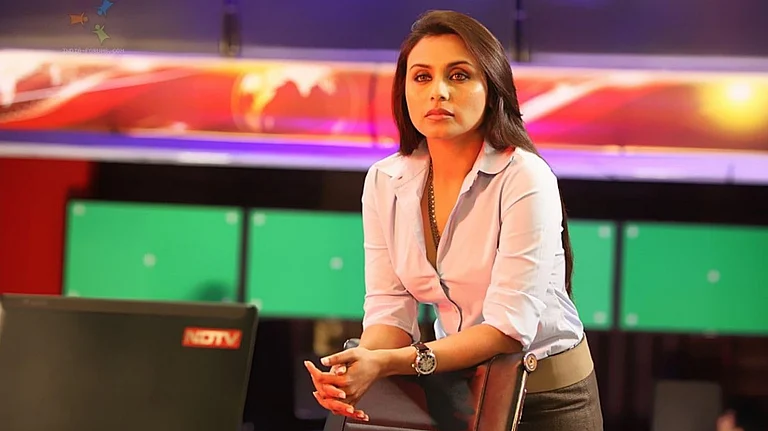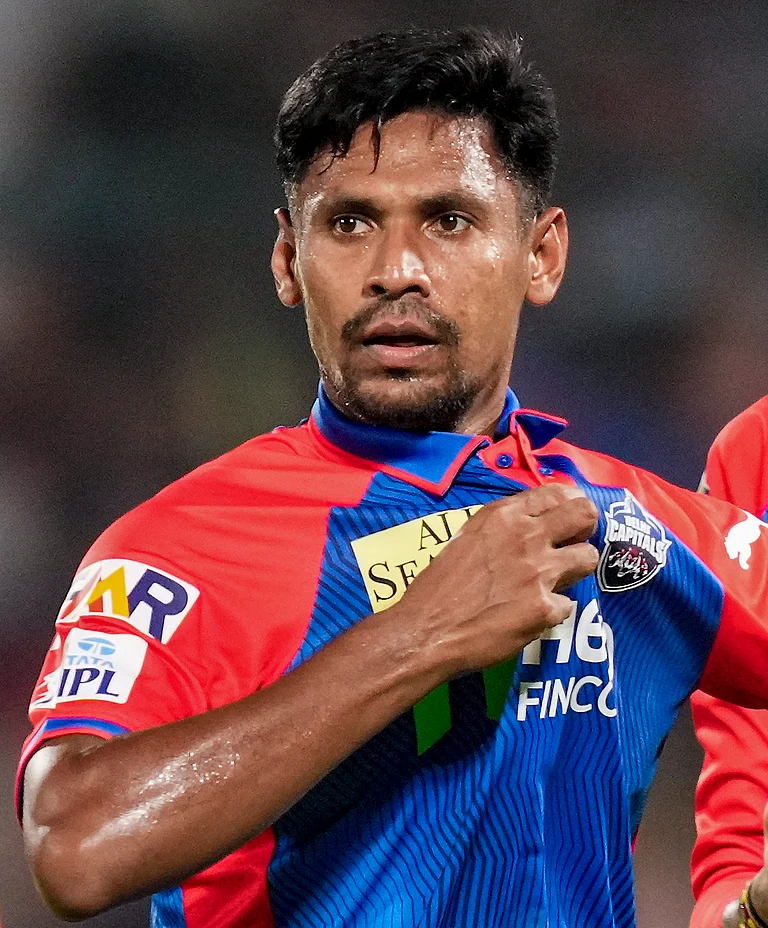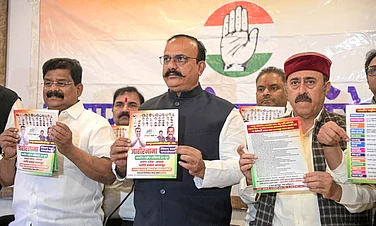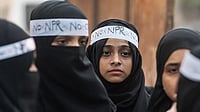“Goans are divided by political parties but united by Revolutionary Goans. Let’s revolution.” This is the message on the Facebook homepage of Revolutionary Goans, a party contesting the assembly elections in Goa. One among the smaller political parties in the fray across the five poll-bound states, the Revolutionary Goans Party (RGP) pitch doesn’t tell the voter to elect them to rule. What then are the reasons for such parties, with zero presence, to contest elections with the full knowledge that defeat is imminent?
They take the emotional route to touch base with the electorate. The RGP is using its election symbol—football—to make an emotive plea to Goans, who are as passionate about the game as they are about their homegrown feni. There are in excess of 150 clubs across the top four tiers of football in Goa, in addition to several hundred village clubs. Football is the state sport, a game used by the Portuguese as a tool to hold on to the state culturally, when they decided to permanently leave Goa. Their well-thought out symbol is RGP’s way of establishing a “heart connect” with the people of Goa.
Politics of identity plays a dominant role when smaller parties contest the polls. Their crowdsourced funds are no match for the bottomless money pit of their opponents. Given this, the smaller parties draw their limited supply of volunteers from friends and well-wishers as more often this is a free service. They are unable to stand up to the high-pitched, in-your-face-campaigns of big parties, which are run by well-heeled public relations agencies and high-profile political advisors like Prashant Kishor. Yet, they contest. “It is to establish their identity,” said Abhay Mandvekar, a Mumbai-based political analyst. “Winning or losing is not the issue here, it is to make a beginning and stay relevant,” he said.

Poll symbols A volunteer sports a badge with the picture of Shivpal Yadav, founder president of the Pragatisheel Samajwadi Party (Lohia)
In every election-bound state, smaller parties are trying to establish a foothold, fully aware of the gigantic odds stacked against them. Identity politics is a singular force driving them, say political experts who have closely watched elections in India. According to a source in Delhi’s Jawaharlal Nehru University (JNU), some of them are pop-ups for prominent people and are “vote cutters” in the elections. “Given the era of coalition politics that we are in, these smaller parties are on the lookout for alliances with bigger parties. Many of them are community-based parties who command at least some voice with their constituents. If there is an alliance with a bigger political party, it is a win-win situation,” said the JNU source.
Though the past decades have seen a steady increase in their numbers, the opposite is being seen in the 2022 polls in Goa, Uttarakhand, Uttar Pradesh, Punjab and Manipur.“Yes, we have seen a noteworthy reduction. This is also due to the strict Covid-19 protocols in place. There will be no physical rallies and no crowding. They have to do their campaigns in the virtual space. It is due to the lack of infrastructure and funds,” said a source in the Election Commission of India.
In every state in the poll fray, there was a shrill cacophony before the elections were announced. National parties started buzzing with their war chests and pre-poll alliances, further shrinking the space for smaller parties. Even in a large state like Uttar Pradesh, there is a visible fall in the number of smaller parties in the fray this time.
This fact is validated by a campaign manager of the Congress. “This is across all five states where elections are being held. Previously, there were so many parties. This year, there aren’t too many. The ones who are there are busy trying to piggyback on alliances with a bigger party,” said the campaign manager. With narrow victory margins expected and winnability being the driving force behind candidate selection, bigger parties are unwilling to concede from their seat-share in any tie-ups. Therefore, many tie-up talks with the smaller parties have failed to take-off.
In UP, the Pragatisheel Samajwadi Party led by Shivpal Yadav, uncle of Samajwadi chief Akhilesh Yadav, is the leading contender among smaller parties looking for tie-ups. Shivpal had tried to get his own party going, thinking that his elevated status within Samajwadi Party would help him establish an identity for it. However, sensing that it was not working, Shivpal has now tied up with SP for the 2022 UP polls. He split out of SP after a showdown with his nephew and SP chief Akhilesh Yadav—son of his brother Mulayam Singh Yadav.
Other small parties in the fray in UP include the All India Majlis-e-Ittehadul Muslimeen (AIMIM), Azad Samaj Party, Mahan Dal, RashtriyaVyapari Party, Apna Dal, Samanta Party and the Jan Adhikar Party. Though nominations for the first phase of polls have started, most of the smaller parties have not declared their candidates as yet, said sources. The leader of Azad Samaj Party, Chandrashekhar Azad Ravan, has announced he is willing to tie up with like-minded parties, broadly firing salvos at Akhilesh Yadav. However, SP is yet to respond to the feelers sent. Sources say Azad has a single-point strategy—a tie up with a larger party. “He has a sizeable hold over Dalit votes in UP. This is his biggest bargaining power, he knows it too,” said a source.

Demonstrators in Shaheen Bagh hold photographs of Chandrashekhar Azad Ravan, leader of Azad Samaj Party.
The Election Commission’s Covid-19 protocols have forced political parties to undertake virtual campaigns. While major political parties have roped in reputed public relations agencies to take on their poll campaign, smaller parties do not have the funds or infrastructure to undertake large-scale social media campaigns, including digital rallies. The infrastructure handicap has forced many of the smaller parties to look in the direction of pre-poll alliances.
Political heavyweight Babu Singh Kushawa has announced that his Jan Adhikar Party will contest all the 403 seats in UP. This came after he was unable to finalise alliances with BJP or SP. About three months ago, Kushawa had met Akhilesh Yadav, but could not come to any alliance understanding. He met several BJP leaders multiple times, but was unable to forge an understanding with them. It is after this that Kushawa decided to contest all the 403 assembly seats in UP.
In Goa, Trinamool Congress (TMC) has launched an intense poll campaign driven by well-known poll campaigner Prashant Kishor, since 2019. He is the principal political advisor to West Bengal chief minister Mamata Banerjee. Regarding the campaign, his is the last word, a fact that is not sitting well with many TMC leaders. The reason for the party’s aggressive foray into Goa’s election is based on its broad expansion strategy of targeting BJP-ruled small states with a weak opposition, to build the TMC organisation there. Kishor is pitching the Mamata brand as an aggressive, indomitable leader capable of giving BJP a taste of their own methods. The TMC strategy is to target those states where Congress is in a state of turmoil.
Kishor is at present executing ‘deals’ on behalf of TMC. He believes the creation of a ‘wave’, using various communication channels, extensive ground-level surveys and branding exercises yield best possible results in small states, especially when the organisation has no previous presence of any mentionable significance. The targets for TMC are Goa, Tripura, Meghalaya and Haryana—all small states with elections due in 2022-2023.
Parimal Maya Sudhakar, political analyst from the Pune-based MIT School of Government, is of the opinion that smaller parties contest elections to stay relevant and keep their cadre together. When political parties do not contest elections for a long time, their cadre tend to move on to parties that are more relevant. “Shiv Sena and NCP are contesting in UP to keep their cadre together. If they do not enter the election fray, they stand to lose much more than contesting and losing the polls,” said Sudhakar to Outlook. “Not contesting elections is slow death. Over the years, the CPI and CPM did not contest in elections in many states, and they lost out on the cadre. Today, they have a negligible presence in a majority of states. The political cadre cannot remain silent for a long time,” said Sudhakar.
A majority of these political parties contest just a few seats to ensure that their party workers don’t desert them. Voting patterns from previous elections they have contested, and the results thereof, are the decider for which constituencies to contest. In the case of caste or community-based parties, entering the poll fray is to showcase their strength and raise their bargaining capacity. The strategy is to showcase their strength to a bigger party, which can give them a great advantage when bargaining deals. Post-elections, some of the smaller parties look to expand their presence in the constituency or in the state.
“For many of these small parties that are seen today, their plans are long-term and not too ambitious. It is a matter of being more relevant or less relevant. They have realised that they can be very relevant in this day of coalition politics and attach themselves to a bigger party,” said Sudhakar.

Stepping out West Bengal chief minister Mamata Banerjee in Goa; Delhi chief minister Arvind Kejriwal speaks at a Lucknow rally; and AIMIM chief Asaduddin Owaisi addresses supporters in Moradabad.
Two Bihar-centric political parties—Nitish Kumar’s JD(U) and the Union minister Pashupati Kumar Paras-led RLJP (Rashtriya Lok Janshakti Party)—will travel about 1,409 km to faraway Manipur and contest in the Assembly polls there. While JD(U) will field candidates in 15 constituencies, RLJP will contest in six seats where the candidates have done well in the 2017 Assembly polls. The RLJP is awaiting a nod from the NDA for a tie-up. However, if not given sufficient seats, the party will go it alone, said Paras, younger brother of the late Ram Vilas Paswan.
One of the greatest success stories of a small party emerging as a dominant alternative force is the Aam Aadmi Party (AAP). The fact that Arvind Kejriwal came out of nowhere and brought the Congress party down in Delhi has become an inspirational example for smaller parties, said Sudhakar. In the 2022 elections, the AAP is keen on shedding its “Delhi-centric” image and pitch itself as a national alternative. It is emerging as a tough contender to mainstream political parties in UP, Uttarakhand, Punjab and Goa. Led by convenor and Delhi CM Arvind Kejriwal, AAP leaders are presenting the party to voters as an alternative force of change.
Theirs is a well-planned and laid out campaign broadly similar in all states going to polls. The party has resorted to the staggered release of their manifesto of promises. Called the “Kejriwal Guarantee”, AAP has an aggressive campaign on the ground. Volunteers at the block and ward levels of constituencies are working in tandem to reach every household and tell them about the “Kejriwal Guarantee Card”. It promises a complete overhaul of the education system, healthcare, water supply and distribution, electricity and employment to the jobless, on the lines of the Delhi model of development.
AAP’s outreach programmes play on the emotional note—for women, they promise a monthly allowance to all above the age of 18 years. Employment opportunities will be created and the youth will be given an employment allowance until they find jobs. The promise for UP includes the creation of 10 lakh jobs every year, until each of the 34 lakhs registered on the employment exchange website of the UP government, has found jobs. AAP’s UP in-charge, Manish Sisodia, who is the deputy CM of Delhi, has time and again reiterated that a monthly job allowance of Rs 5,000 will be provided to them. Question paper leaks are a common feature in UP’s examinations, and AAP has promised to make them leak-proof.
Kejriwal’s foray into elections in these states is a well-thought strategy, say observers. The party hopes to form governments in at least two of the five states in these polls.
In Punjab too, AAP has risen to be the principal Opposition party. Its victory in the Chandigarh civic polls came as a shocker to BJP and Congress. Chandigarh is an important seat of power for both Punjab and Haryana. While the Congress rules Punjab, it is BJP in Haryana. However, the people’s mandate rested with AAP. This indicates that an AAP wave is slowly sweeping through Punjab. The Punjab Lok Congress, launched with much noise by heavyweight former Congressman Captain Amarinder Singh, has an alliance with the Dhindsa faction of Shiromani Akali Dal and BJP, as he has realised the futility of going it alone.
In Goa, AAP is going it alone. However, the party is open to post-poll alliances in government formation. Despite assurances that it is not a caste-based party, AAP’s CM candidate will be from the Bhandari community, while the deputy CM will be Catholic. There is a strong feeling that the anti-BJP vote will split as there are too many parties in that space, including Congress, NCP, Shiv Sena, TMC, AAP, Maharashtrawadi Gomantak Party and Goa Forward Block. The Vijay Sardesai-led Goa Forward Party has a pre-poll alliance with Congress, which has triggered large-scale defections from the Congress to BJP, AAP and TMC.
In Uttarakhand, since 2014, the presence of AAP has grown by leaps and bounds. In this hilly state, AAP has already announced its chief ministerial candidate, but has shied away from doing so in other states. The newly packaged AAP has stronger leadership in the states, better organisational structure and more volunteers. Armed with this, it’s planning on achieving national party recognition from the Election Commission.
Experts believe the motivation of smaller parties is puzzling. “For many, it is not about identity or keeping their partymen together, for they do not have many. Their manifestos are not promising, and are utopian. It is probably to light up the competition and tell voters that they are an alternative. But it is puzzling,” said Mandvekar.
(This appeared in the print edition as "Punjab to Goa, Khela Hobe")
Haima Deshpande in Mumbai & Snigdhendu Bhattacharya in Calcutta


























